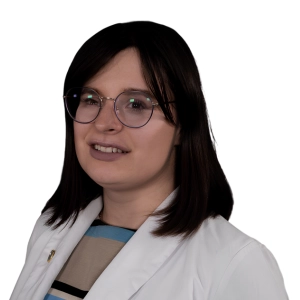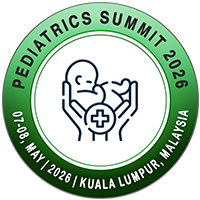
Kristina Kokoreva
Moscow Regional Clinical Research Institute , Russian FederationPresentation Title:
Type A insulin resistance: Making out a diagnosis
Abstract
Type A insulin resistance syndrome is a rare disease caused by defects in the insulin receptor INSR gene, associated with symptoms of hyperandrogenism and insulin resistance.
Objective: to describe a clinical case of type A insulin resistance syndrome
Materials and methods: The girl K. firstly admitted to Endocrinology Research center at the age of 17.9 years complaining of overweight, acne on the face, darkening of the skin around the neck, in the armpits, irregular menstrual cycle up to 60 days. The girl was the second child from the 2nd normal pregnancy, born by caesarean section at 40 weeks of gestation. Neonatal weight was 3350 g. Neonatal length was 52 cm The maternal grandparents have type 2 diabetes. The older half–sister has insulin resistance, polycystic ovaries. From the age of 12, the girl began to gain weight, acanthosis nigricans, acne, oligomenorrhea happened. At the age of 15, she was prescribed metformin hydrochloride 800 mg per day for six months but the girl discontinued taking it by clinical inefficiency. The girl works out in the gym at least 2 times a week.
On examination: height – 169.8 cm, SDS height – 1.04, weight - 75.5 kg, BMI - 26.2 kg / m2, SDS BMI - 1.2. Acanthosis nigricans was on armpits; back of your neck; groin; elbows, inner thighs. Blood pressure is 125/75 mmHg. Tanner 5 (B5 P5), the menstrual cycle is irregular. Oral fasting glucose tolerance test (OGTT) showed no glucose and insulin increase. Fasting glucose was 4.2 mmol/l, fasting insulin was 101 µed/ml. 2 hours after glucose loading insulin was at the level of 684 µed/ml, glucose was at the level of 5.3 mmol/L. Taking into account the medical history, clinical signs of hyperandrogenism and insulin resistance (acanthosis, acne, oligomenorrhea) in the absence of obesity and laboratory data, Insulin resistance syndrome type A was suspected. The diagnosis was subsequently confirmed by NGS results. A pathogenic heterozygous variant (HG38, chg19:7122707C>T, c.3436G>A, p.Gly1146Arg) was found in exon 19 of the INSR insulin receptor gene (NM 000208.4). The presented clinical case expands our understanding of this disease. Timely genetic verification of the diagnosis is necessary to determine long-term patient management and prognosis, and to provide genetic counseling. The issue of prescribing metformin in pediatric patients with insulin resistance and normoglycemia remains controversial.
On examination: height – 169.8 cm, SDS height – 1.04, weight - 75.5 kg, BMI - 26.2 kg / m2, SDS BMI - 1.2. Acanthosis nigricans was on armpits; back of your neck; groin; elbows, inner thighs. Blood pressure is 125/75 mmHg. Tanner 5 (B5 P5), the menstrual cycle is irregular. Oral fasting glucose tolerance test (OGTT) showed no glucose and insulin increase. Fasting glucose was 4.2 mmol/l, fasting insulin was 101 µed/ml. 2 hours after glucose loading insulin was at the level of 684 µed/ml, glucose was at the level of 5.3 mmol/L. Taking into account the medical history, clinical signs of hyperandrogenism and insulin resistance (acanthosis, acne, oligomenorrhea) in the absence of obesity and laboratory data, Insulin resistance syndrome type A was suspected. The diagnosis was subsequently confirmed by NGS results. A pathogenic heterozygous variant (HG38, chg19:7122707C>T, c.3436G>A, p.Gly1146Arg) was found in exon 19 of the INSR insulin receptor gene (NM 000208.4). The presented clinical case expands our understanding of this disease. Timely genetic verification of the diagnosis is necessary to determine long-term patient management and prognosis, and to provide genetic counseling. The issue of prescribing metformin in pediatric patients with insulin resistance and normoglycemia remains controversial.
Biography
Kristina Kokoreva has been working at Endocrinology Research Center from 2020 year, firstly as pediatric endocrinologist in 24-hour shifts, then as pediatric endocrinologist in Polyclinic Department. In 2023 she finished her PhD thesis and successfully got her PhD degree. She has over 30 publications. Her main area of interests is hypogonadotropic hypogonadism, but her publications covers different endocrinology diseases.

